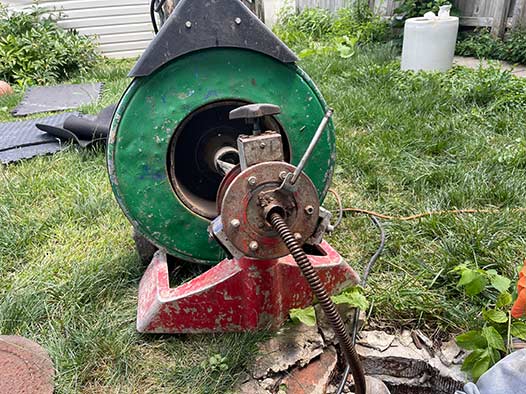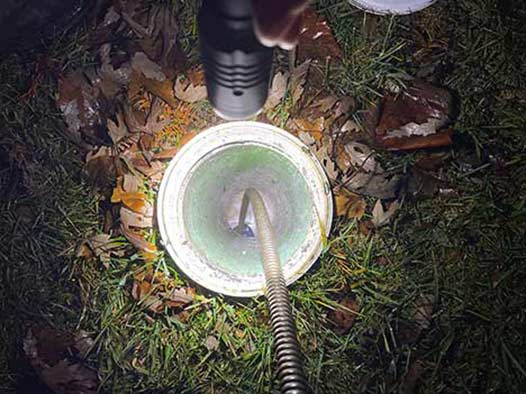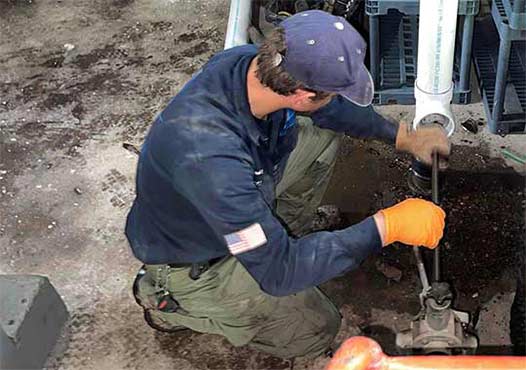
Sewer rodding is a specialized technique for clearing clogs and blockages from pipes, drains, and sewer lines. Due to its ease of use and versatility, this is a favorite drain-cleaning method for professional plumbers, says Key Home Management.
Sewer rodding restores the function of blocked lines and serves for routine maintenance. In this post, we answer the frequently asked questions about sewer rodding, how it works, how much it costs, etc.
How does sewer rodding work?
A specialized tool – a flexible pipe and mechanical cutting head – is inserted into the pipe. The length of the rod may be extended by connecting a series of pipes end-to-end. The mechanical head at the end of the line is equipped with sharp teeth to help it cut through blockage, including tree roots. The tool is guided through the pipes with compressed air or a rotating motion. Once it reaches the blockage, the spinning motion of the cutting head is used to break up the blockage.
How will the plumber access the blocked line?
Typically, to access your sewer line, the plumber will use your outside sewer cleanout. That is the easiest way to clear out a sewer line. But if this is impossible or the blockage is not inside your sewer line, the plumber will rod the sewer line via a floor drain or toilet. The quickest and most affordable method is to access the pipes through the cleanout.
What kind of blockages is sewer rodding good for?
Rodding is highly versatile; it is effective for clearing major and minor blockages in sinks, toilets, and the main sewer line. That is because sewer rodding uses different types of rods for different blockages. Depending on the nature of the problem, a tape rod (a roll of steel wire) or a kinetic water ram (a more advanced tool) may be used. The plumber will choose the best rod for your particular drainage problem.
Do I need a camera inspection before sewer rodding?
Conducting a sewer camera inspection before rodding your sewer line is not entirely mandatory but recommended. A camera inspection of the interior sewer line helps the plumber assess the sewer line by providing accurate information on the type of blockage and its location inside the line. If the plumber suspects that your sewer line may be broken, they will use a sewer camera inspection to confirm it. A sewer camera inspection is also done to check the line after sewer rodding.
Is sewer rodding dirty work?
Yes, it is. Sewer rodding is a dirty work that can expose you to unsanitary contents inside your sewer line. Especially when rodding a sewer line, the risk of exposure to germs is very high. If sewer rodding is not done carefully, the material retrieved from a blocked drain can contaminate water or spread bacteria into the surrounding area. That is why experienced plumbers always clean up after their work is done.
Is sewer rodding expensive?
Compared to excavating your yard to retrieve and replace a damaged sewer line, sewer rodding is extremely affordable. Also, because sewer rodding is quick and minimally disruptive, the cost of lost time is insignificant. In absolute dollar terms, sewer rodding is affordable; rodding a clogged sewer line or slow-draining line costs between $150 and $600.
How long does sewer rodding take?
The duration depends on how easy it is to access the line. If the clogged line can be accessed through an outside cleanout, sewer rodding can be completed in one hour. The line’s condition is another factor that determines the actual duration of the operation. If several blockages are inside the line, it will take the plumber more time to get through all of them.
Can I do sewer rodding myself?
Since anyone can purchase or hire sewer rodding equipment, it is possible to do sewer rodding yourself. But is it a good idea to do it? No, and that is because sewer rodding involves poking around inside your pipes with a sharp metal tool. Sewer rodding is a complex process that requires a lot of experience. Trying to do sewer rodding yourself may leave you with damaged sewer lines and costlier plumbing problems.
Can I use sewer rodding for plumbing maintenance?
One of the best things about sewer rodding is you don’t have to wait until your sewer line is clogged to use it. Sewer rodding can be used for preventive maintenance. Rodding your sewer line yearly is one of the best ways to keep it debris-free. Doing this can drastically reduce the cost of maintaining your plumbing.
To conclude, the quality of your results when doing sewer rodding depends on your plumber’s ability. That is why choosing a plumber with a proven track record is essential. An experienced plumber will save you money by protecting your plumbing throughout the operation.






